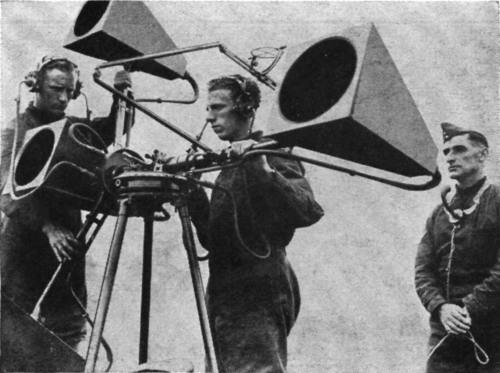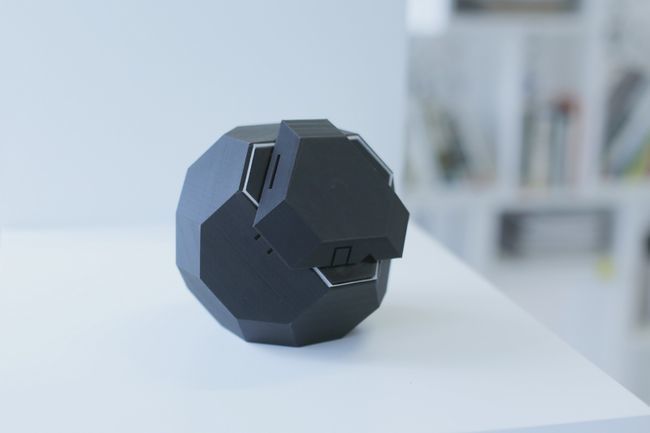Difference between revisions of "User:Jeanine Verloop/minor q14 research"
| Line 144: | Line 144: | ||
''Arduino'' | ''Arduino'' | ||
<br> | <br> | ||
| − | We did a lot of experimentation with the | + | We did a lot of experimentation with the arduino. We did experiments with servomotors, mp3 boards and touch sensors. The experiments were mainly altering the code of the arduino and testing out different settings and placements. |
<br> | <br> | ||
| − | '' | + | ''Materials'' |
<br> | <br> | ||
| − | + | We worked with two different main materials. | |
| + | Because we wanted to work with tough materials and because the both of us always have wanted to work with this material did we choose to work with concrete. The other We made positive molds out of clay and used the vaccuum press in the ceramics workplace to make negative molds. Within the molds we put wooden skeletons to give the | ||
<br> | <br> | ||
| − | |||
| − | |||
| − | |||
</span> | </span> | ||
Revision as of 15:17, 9 January 2018
>>> research <<<
weapons of data destruction
QUARTER 14
paper
references
PICTURES
Collaborators
THARIM CORNELISSE
Major // illustration
PAGE THARIM
JEANINE VERLOOP
Major // illustration
PAGE JEANINE
Contents
Forward/Introduction
Tharim is the digital, Jeanine is the craft.
Where Jeanine is running in material stations, Tharim likes to stare at his screen for hours.
We teamed up because we complement each others flaws and because of our shared view on art, aesthetics and technology.
We don't consider ourselves classic illustrators and feel a strong urge to work with interesting techniques and materials.
Before we started this project we found out we had a lot of shared artistic interests, ways of working and design preferences. Based on these shared ideals we worked as a team on this project.
Abstract
Social media is getting more and more accurate in showing you what it thinks you want and believe. It creeps us out because the algorithm used is under the surface, we see no physical explanation. Because of this people are feeling watched and not safe. And so we gather around the campfire, telling stories of the modern boogieman lurking in the shadows of our devices, spying and gathering information.
Within this conflict we fought a small battle. Our weapons of choice: tactile and understandable devices, which create dirty data.
Central Question
How does the individual cope with data farming [1]?
Relevance of the Topic
Data farming is a very present-day subject. We are on a critical point of learning how to deal with it. People are afraid of it just like every other time in the past when technology makes a jump [2].
Data is the new opportunity and businesses are in a race to be on top of it. “We’re running out of time. What we decide today will create the future.” [3].
This affect both, the individual and society. Data is a new currency with a lot of people unknowingly providing it.
Hypothesis
Our collection will not have a real effect, in the sense that it does not help to blur the data on a scale that makes it unusable. Our weapons will send a positive message, positive in the sense that we are in control and not the technique. That there is a face behind the technology that we can disrupt through minimal adjustments.
We hope that our weapons radiate reliability through operation, design and material choices. We want to achieve this by working with solid, recognizable and natural materials.
Last but not least, we hope our work is going to make people think, reflect and laugh.
Research Approach
During the project we have shifted between different themes, because the research was asking for this or because our interests were leading us into new directions. The project could be divided in three different parts. The voice, the echo chamber and data farming. Within these subjects we have performed different forms of research. We read articles, looked up other works, did material experiments, discussed the subject with fellow students and built different kinds of objects and machines.
Key References
Some of the things we found out while doing our research were always in the back of our heads. They connected themes or acted as inspiration for our final work.
Acoustic Location and Sound Mirrors, The Museum of Retro Technology[4]'
'Before the advent of the aeroplane, acoustic location was applied to determining the presence and position of ships in fog. However little faith was placed in this because the apparent direction of sounds in fog at sea was known to be sometimes deceptive. …the technology was rendered obsolete before and during WW2 by the introduction of radar, which was far more effective.'

Instagram is listening to you, Damián Le Nouaille [5]
Please Instagram, explain to me how you’re doing this. I’m a developer, I know how iOS and networks work, and I’m still very curious about the technology you’re using.
Thero Privacy control, Roman Torre and Angeles Angulo
'Privacy and security on the Internet is a hotly debated topic. On the one hand, there’s a possible need to be able to track and find people that would like to to others harm. On the other, there’s the idea that it’s no one else’s business what you search for, or what websites you visit. Still another faction would simply like to sell and use this data for profit in exchange for the use of their services. All of these issues come together to make security choices complicated for computer-savvy individuals, and likely nearly impossible for those that aren’t.'
'To address this issue, Roman Torre and Angeles Angulo have come up with a Raspberry Pi 3-based physical device called THERO that lets you manage security settings with the turn of a dial.' [6]

Literature
“I produce my voice, but my voice also produces me.”
RESONANT BODIES VOICES MEMORIES - Johanna Biľak
“And what is voice if it is not simply an instrument for self-expression and self-realisation we can
command?”
Steven Connor, Dumbstruck: A Cultural History of Ventriloquism. pp. 3 - 5 and pp. 342 - 346
Jean-Peul Sartre - Being and Nothingness [7]
Experiments
(what are you going to test out and why)
THE VOICE
Lyrebird.ai
Lyrebird.ai is a website were you can teach an ai to speak with your voice. You train the machine by recording certain sentences. We recorded our voices in the sound station at the WDKA and used the machine to tell lies about us. [8]
Stickers
Autocorrect
Chladni figures
A side experiment we did was using a speaker and a laser to show certain sound characteristics. We added a piece of mirror to a speaker and pointed a laser at it. The reflection of the laser created patterns on the wall where the speaker pointed towards.[9] We played with the frequency, panning and resonance of the sound and created a lot of different patterns. We thought we might use this technique later on in the project, but we ended up using other techniques.
ECHO CHAMBER
Arduino
We did a lot of experimentation with the arduino. We did experiments with servomotors, mp3 boards and touch sensors. The experiments were mainly altering the code of the arduino and testing out different settings and placements.
Materials
We worked with two different main materials.
Because we wanted to work with tough materials and because the both of us always have wanted to work with this material did we choose to work with concrete. The other We made positive molds out of clay and used the vaccuum press in the ceramics workplace to make negative molds. Within the molds we put wooden skeletons to give the
Insights from Experimentation
(what have you pulled from your hands on practice based research?)
Artistic/Design Principles
The objects that we want to make have to be raw. They have to be the opposite of the smart and futuristic algorithms and computers. The tools should have one function and this function should be clear when you see the tool. We want to work with sturdy and natural materials that amplify the primitive touch of the tools.
The objects that we want to make will present devious solutions. By doing so we hope to bring a positive side to a heavy problem. We want to put a grin on people their face while they use our tools.
Our weapons will have specific targets. We want to bring the battle to a personal level. The faceless machine that we encounter on the internet is so much easier too fight when we attach a face to it.
From the start we had some shared basic principles. The objects had to work smoothly, look like finished objects and we should be able to put it in our portfolio.
Artistic/Design Proposal
We are going to make 5 analog weapons to fight a digital battle.
These weapons are objects which dirty up the trail of data which you leave behind on the internet.
Keyboard
This object is supposed to be used while writing mails. When the object is put over the keyboard you won’t be able to use certain symbols while typing your mail. The data that previously was interesting is now useless because the typed words are now unreadable.
Target: Daniel Yehdego, senior data & applied scientist at Microsoft.
Mouse
To randomise your behaviour on Facebook you put your mouse in this device. A disk underneath the mouse will start rotating which will make the mouse hover across the screen. After the disk has stopped turning a little motor will press the left button on the mouse. These actions repeat itself with different degrees of rotation from the disk every time the loop starts again. The movements of the two motors are being controlled by a hidden Arduino board.
Target: Timur Sumer, data scientist analytics at Facebook.
Kaleidoscope
The kaleidoscope can be put over the webcam while making a Skype call. The transferred data shows a lot less details than it normally would. Your face, surroundings and other information is being covered.
Target: Gorm Kroeger, data analyst at Microsoft / Skype.
Speaker
This device contains a speaker which starts to talk to your phone when you lay it on top of it. It says words that will trigger instagram algorithms to show other advertisements.
Target: Ting Pan, data scientist at Instagram.
Tank
The final object will be targeted at google. An aquarium under which you can put your phone. When you run an electric current through the water in the tank the signal from and to your phone will be blocked. Your location can’t be tracked this way.
Target: Vanessa Schneider, geo media program manager at Google.
Realised work
(what did you actually make)
Final Conclusions
(what was the point? what do you take away?)
Bibliography
- ↑ reference, data farming, wiki reference page
- ↑ Peter-Paul Verbeek, Wij hebben geen klauwen en dus hebben we ’n iPhone, website
- ↑ JoAnn Stonier, Data is the new currency, article
- ↑ Acoustic Location and Sound Mirrors, The Museum of Retro Technology website
- ↑ Damián Le Nouaille, Instagram is listening to you blogpost
- ↑ Jeremy S. Cook, THERO : A Physical Device for Internet Privacy Control website
- ↑ Jean-Paul Sartre, Being and Nothingness book
- ↑ Lyrebird.ai website
- ↑ Wikipedia, Chladni figures website